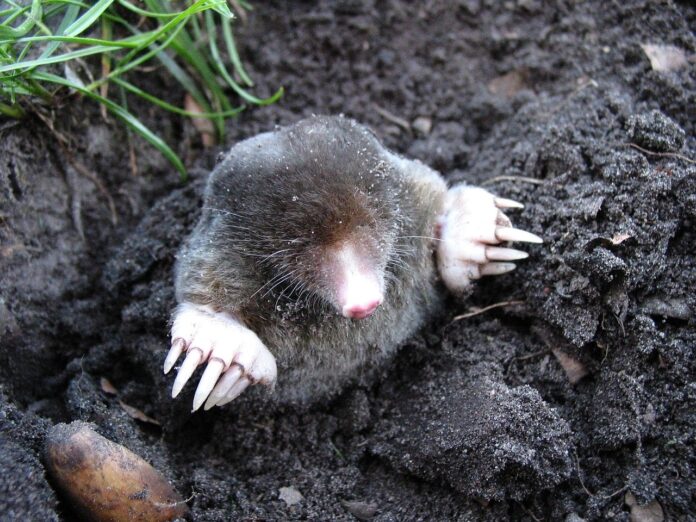Blind underground dwellers, moles are true hard workers. They live in conditions that are difficult for humans to imagine. What is it like to exist without sunlight, almost never emerging to the surface? However, nature has perfectly adapted these creatures to underground life.
While some farmers and gardeners may not be fond of moles for digging up their gardens and plots, humans often find it hard to coexist with various animals in the same space.
Facts About Moles
- The diet of this mammal mainly consists of insects, but moles won’t hesitate to eat small animals, such as frogs, if given the chance.
- Cannibalism is not foreign to moles, and they may easily eat a weaker fellow mole.
- In the wild, moles are mainly found in Eurasia and North America, and they exist in large numbers.
- Moles spend almost their entire lives underground, which is why their vision is very weak, but their sense of smell is extraordinarily well-developed.
- Moles can dig tunnels several tens of meters long in just one day.
- They find their main food source, insects, by digging directly underground.
- A mole consumes an enormous amount of food each day, nearly equal to its own body weight.
- Moles also store food for “a rainy day.” In some of their storage chambers, which they usually have several of, they gather up to 1.5-2 kilograms of food.
- Moving through underground tunnels quickly wears down a mole’s fur. However, nature has taken care of this—these creatures molt 3-4 times a year, each time getting a new coat.
- The fur of a mole grows straight, not in a specific direction like most other animals. Thanks to this, the fur doesn’t get ruffled when a mole moves forward or backward underground.
- Mole fur was once highly valued. Interestingly, in Tsarist Russia, mole pelts were almost never harvested, but in the Soviet Union, procurement offices received tens of millions of pelts annually.
- This small animal has a total of 44 teeth. However, body size is not indicative here—snails, for example, have thousands of teeth.
- About 1% of agricultural production is lost due to moles. Although these creatures do not eat plant food, preferring animal proteins, they damage the root systems of plants by digging their underground tunnels.
- In ancient times, people would predict the upcoming winter by observing molehills. If the mole began digging from the north side, it meant a warm winter; from the south—a cold one. From the west signified a wet winter, and from the east, a dry one.
- A mole can cover up to 30 centimeters underground in just one minute.
- Almost all attempts to breed moles in captivity have ended in failure, with the animals soon dying.
- Moles do have eyes, and they function. They’re usually not visible because they are covered by folds of skin.
- Female moles nurse their young with milk until they are strong enough to venture into adult life on their own.
- Without food, moles can survive for no more than 15-17 hours.
- Contrary to popular belief, moles do not hibernate in winter. Their activity merely decreases significantly. Hunting for insects in frozen soil is difficult, so they rely on stores accumulated during the warmer months.
- The reproductive organ of male moles contains a bone.
- The favorite delicacy of these animals is earthworms.
- Moles usually create a central “bedroom” in their underground tunnels, with numerous offshoots leading to storage chambers.
- A mole’s burrow can be several hundred meters long.
- Dirt hardly sticks to mole fur.
